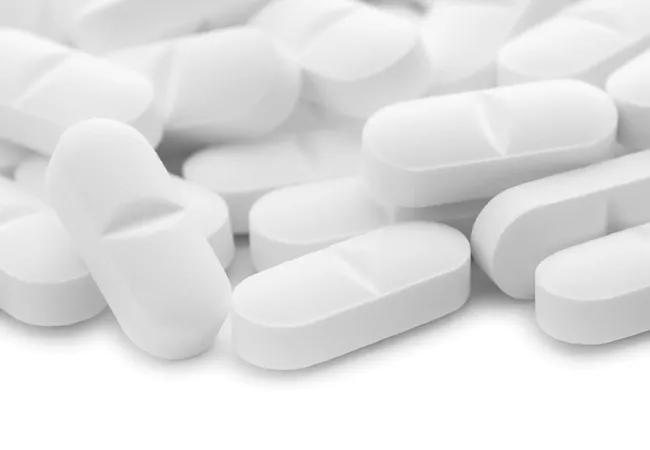Also finds PCSK9 inhibitor more potent than ezetimibe in statin-intolerant patients

For the first time, a major clinical trial has demonstrated that muscle-related statin intolerance is reproducible using a blinded, placebo-controlled statin rechallenge among patients with a history of muscle-related symptoms associated with statin use.
Cleveland Clinic is a non-profit academic medical center. Advertising on our site helps support our mission. We do not endorse non-Cleveland Clinic products or services. Policy
The multicenter study, known as the GAUSS-3 trial, was presented April 3 at ACC.16, the American College of Cardiology’s 65th Annual Scientific Session, and simultaneously published online in JAMA.
The study also showed that two statin alternatives — ezetimibe and the recently FDA-approved PCSK9 inhibitor evolocumab — are about equally unlikely to cause muscle symptoms in statin-intolerant patients, although evolocumab produced significantly greater reductions in low-density lipoprotein cholesterol (LDL-C).
“Statin intolerance has been one of the most vexing problems faced by cardiologists,” says presenter and lead investigator Steven Nissen, MD, Chair of Cardiovascular Medicine at Cleveland Clinic. He notes that 5 to 10 percent of patients with high cardiovascular risk refuse to take statins after reporting muscle pain or weakness following statin use. But the diagnosis of muscle-related statin intolerance is based primarily on subjective patient complaints since most patient do not have elevated creatine kinase levels.
“Conflicting rates of muscle-related symptoms in observational studies and randomized trials have raised questions about the true incidence of statin intolerance,” Dr. Nissen says. “So GAUSS-3 sought to assess the reproducibility of statin-related muscle effects using a statin rechallenge procedure in the largest sample size to date. It also was designed to shed light on the tolerability and lipid-lowering effects of two alternative therapies to help us address the unmet needs of patients who do not tolerate statins.”
To accomplish those goals, the GAUSS-3 investigators employed a two-phase study design. In the first phase, 492 patients with uncontrolled LDL-C (mean, 212.3 mg/dL) and a history of intolerance to at least two statins were randomized to 10 weeks of blinded therapy with atorvastatin 20 mg/day or placebo, after which they were crossed over to the other therapy following a two-week washout. The aim was to identify those who had muscle symptoms only with the active drug.
During this first phase, 209 patients (42.6 percent) reported muscle symptoms while taking atorvastatin but not while taking placebo.
“This shows that muscle-related intolerance is reproducible during blinded statin challenge in a substantial fraction of patients with a history of symptoms,” Dr. Nissen notes. Since statin-associated muscle symptoms are dose-related, he adds, the rate seen with this 20-mg/day atorvastatin dose may underestimate the problem, especially for patients requiring high-intensity therapy like those in this trial.
“GAUSS-3 has important implications for guidelines and regulatory policy, because it provides strong evidence that muscle-related statin intolerance is a real and reproducible phenomenon,” he says.
Some 199 of the 209 patients who reported muscle symptoms with atorvastatin in the study’s first phase continued to the second phase. They were joined by 19 other subjects who qualified for direct enrollment because they had muscle symptoms with a creatine kinase greater than 10 times the upper limit of normal while receiving a statin.
Patients in the second phase were randomized in a 2:1 double-blind, double-dummy scheme to 24 weeks of either subcutaneous evolocumab 420 mg monthly or oral ezetimibe 10 mg/day.
To account for pharmacodynamic effects of evolocumab’s once-monthly dosing, two co-primary efficacy end points were used — mean percentage change in LDL-C from baseline to the mean of weeks 22 and 24 (to assess mean treatment effect) and from baseline to week 24 alone (to capture effects at the end of the dosing interval).
On both end points, ezetimibe showed a 16.7 percent reduction and evolocumab showed a reduction of more than 50 percent — specifically, a 54.5 percent reduction for the mean of weeks 22 and 24, and a 52.8 percent reduction at week 24 (P < .001 for evolocumab vs. ezetimibe on both measures). “These reductions in LDL-C are consistent with current labeling for both products,” Dr. Nissen observes.
Results were similar on secondary end points involving various other atherogenic lipoproteins.
Muscle-related adverse events occurred in statistically comparable proportions of the ezetimibe group (28.8 percent) and the evolocumab group (20.7 percent).
Five ezetimibe recipients (6.8 percent) and one evolocumab recipient (0.7 percent) discontinued active treatment due to muscle-related adverse events.
“GAUSS-3 shows that both evolocumab and ezetimibe are unlikely to provoke muscle symptoms and can be administered successfully in statin-intolerant patients, although with significant differences in lipid-lowering efficacy,” Dr. Nissen says.
He adds that since only a minority of patients reached optimal LDL-C levels despite evolocumab therapy, adding ezetimibe to evolocumab might be worth exploring in patients who do not reach target with evolocumab alone. But he notes that neither agent is currently approved for reducing major adverse cardiovascular events. “Though preliminary data are promising, definitive cardiovascular outcomes data with evolocumab are not yet available.”
Click here to view more late-breaking trials and clinical research from ACC.16

Further acute testing not needed if ECG and high-sensitivity troponin are negative

Scott Cameron, MD, PhD, also brings wide-ranging research interests to bear

Pioneering U.K. vascular surgeon joins Cleveland Clinic

AHA statement is first comprehensive document on perioperative stroke reduction

Recognition reflects prioritization of long-term patient outcomes

Recommendations help distinguish exercise-induced remodeling from pathology

JACC review highlights factors unique to women, ways to tailor management

Pushing the envelope in ablation of atrial fibrillation, ventricular tachycardia